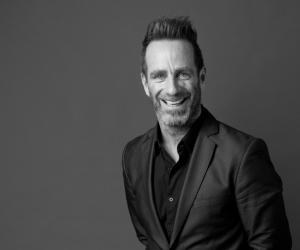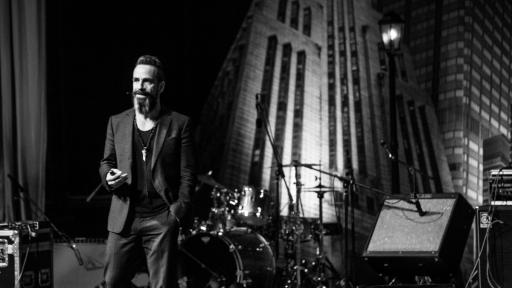From the Series
It was while on tour as a drummer with the his rock group La Gente Normal, that Mexican architect Michel Rojkind fell in love with cities. He developed a passionate interest in the infrastructure, public spaces, planning and building of urban spaces, ultimately deciding to become an architect full time and open his own studio.
When working on a project, Rojkind Arquitectos tries to help the client see new possibilities that may not have formed part of the original brief. "We do research and then we go back to them and show them how to enhance the experience of the project. We try to have added value. We have clients that are only interested in the economic value and we have clients who are interested in the social value, but we try to make every project with added value," Rojkind says.
Rojkind developed a tool called ADD - Adaptive Diagnostic Design - to help clients understand their working process. The tool has been so successful that some clients come only for the ADD process without ultimately appointing the studio as architects. "They work with us as consultants. What is important for Rojkind is that the clients have a better understanding of what they need to do in the first place."
The design of the Cineteca Nacional illustrates how well the ADD tool works. The brief was merely to add four new cinemas and two new vault spaces but the architects saw potential for a much more radical project. Their design reclaimed the parking lot and turned it into a large park with a campus-like feel, creating a unique experience for visitors. Instead of entering the cinemas through a lobby, visitors now filtered through the park into the different spaces of the complex. Rojkind Arquitectos also added a rooftop performance space and outdoor cinema, which proved so popular that the complex now attracts 65 000 more visitors a month.
Working in a country with such economic disparity has triggered Rojkind to find ways for his buildings to give something back to society.
We don't mind designing a department store if it can have a public space on the rooftop or if it can have experiences on the outside that connect to the city in some way, he says.
Case in point: his design for a facade for Liverpool department store in Mexico City. The firm included a design for a rooftop garden that brings a much-needed green public space to the area and enlisted the store's food department to create a restaurant that now generates 30% of the store's income.
Again, for Rojkind it is about finding tangible ways to add real value. "We wanted to put a garden on the rooftop not just because it was 'sustainable' but because it was a space where we could create an experience," he says.
To watch Rojkind's full Design Indaba Conference 2014 presentation download the Design Indaba App.
This year for the first time, the Design Indaba Conference talks make their premiere on our App, conveniently packaged in one place and available for free download.
Download the iOS version here.
Download the Android version here.
The talks will be released on designindaba.com from August 2014.










